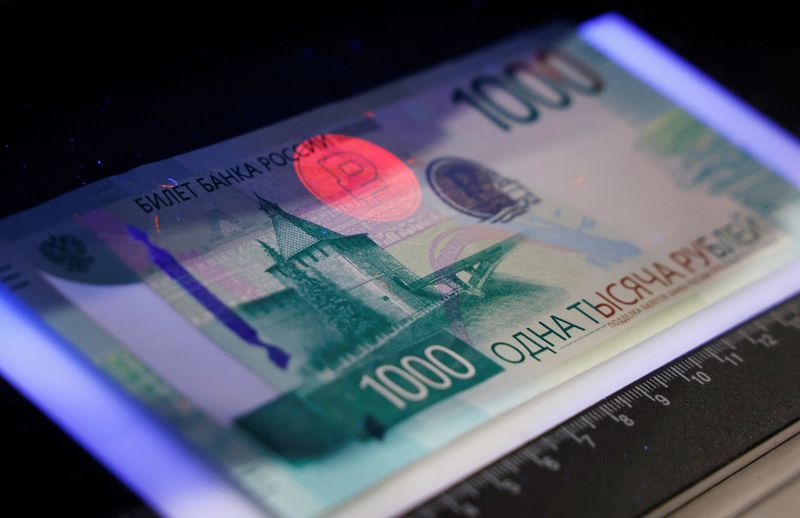MOSCOW (Reuters) - The Russian rouble weakened on Tuesday, pulling back after soaring to a three-month high past 92 to the dollar earlier in a volatile session, supported by high interest rates, but facing a month-end reduction in foreign currency sales.
By 1324 GMT, the rouble was 0.5% weaker against the dollar at 93.28. It had earlier strengthened to 91.6225, its strongest point since Aug. 1.
It had lost 0.3% to trade at 98.90 versus the euro and shed 0.5% against the yuan to 12.70.
The Bank of Russia hiked interest rates by a higher than expected 200 basis points to 15% on Friday, raising borrowing costs for the fourth meeting running in response to a weak rouble, stubborn inflation and increasing budget spending.
"The increase in the key rate has led to a decrease in consumer demand and exporters' requests for dollars and yuan have fallen slightly," said Alor Broker's Alexei Antonov.
"But at the same time, growth in the money supply is continuing and this will definitely result in rouble weakening."
The rouble has now lost support from month-end tax payments, which were due on Monday and usually see exporters convert foreign exchange to pay domestic liabilities.
President Vladimir Putin's decree on mandatory FX sales, which came into force this month, is still buttressing the currency. The decree requires 43 groups of exporters to repatriate 80% of FX revenue and then sell 90% of that sum.
The rouble has strengthened from beyond 100 to the dollar since the decree was announced.
The Financial Times on Tuesday reported that Russia was imposing effective capital controls on Western companies selling their operations in Russia with caps and deadlines on foreign currency transactions, moves that would favour the rouble.
Brent crude oil, a global benchmark for Russia's main export, was up 0.7% at $88.02 a barrel.

Russian stock indexes were lower.
The dollar-denominated RTS index was down 1.4% to 1,079.1 points. The rouble-based MOEX Russian index was 1% lower at 3,195.7 points.